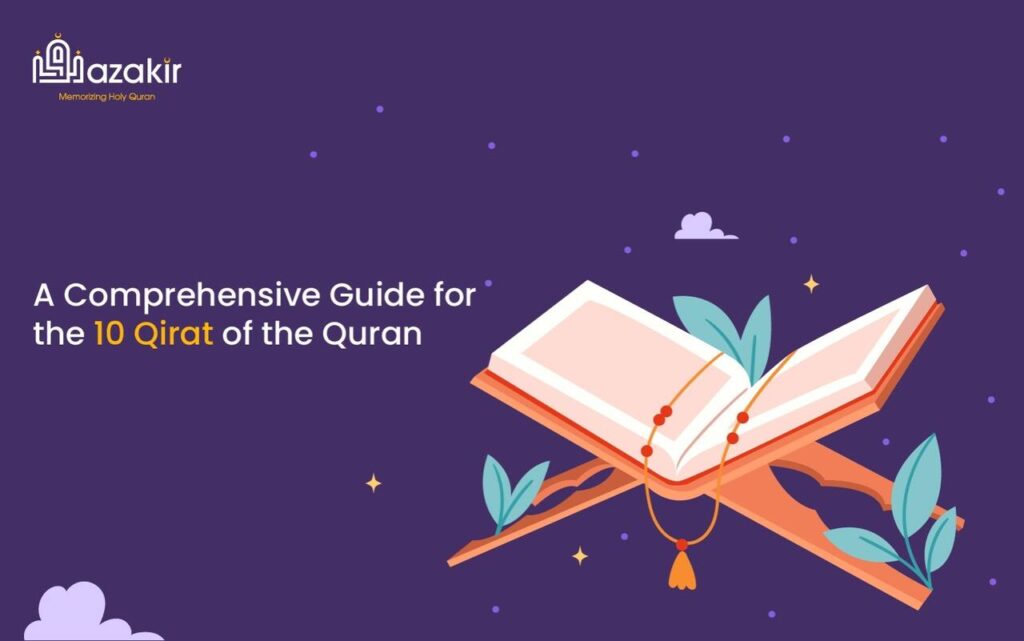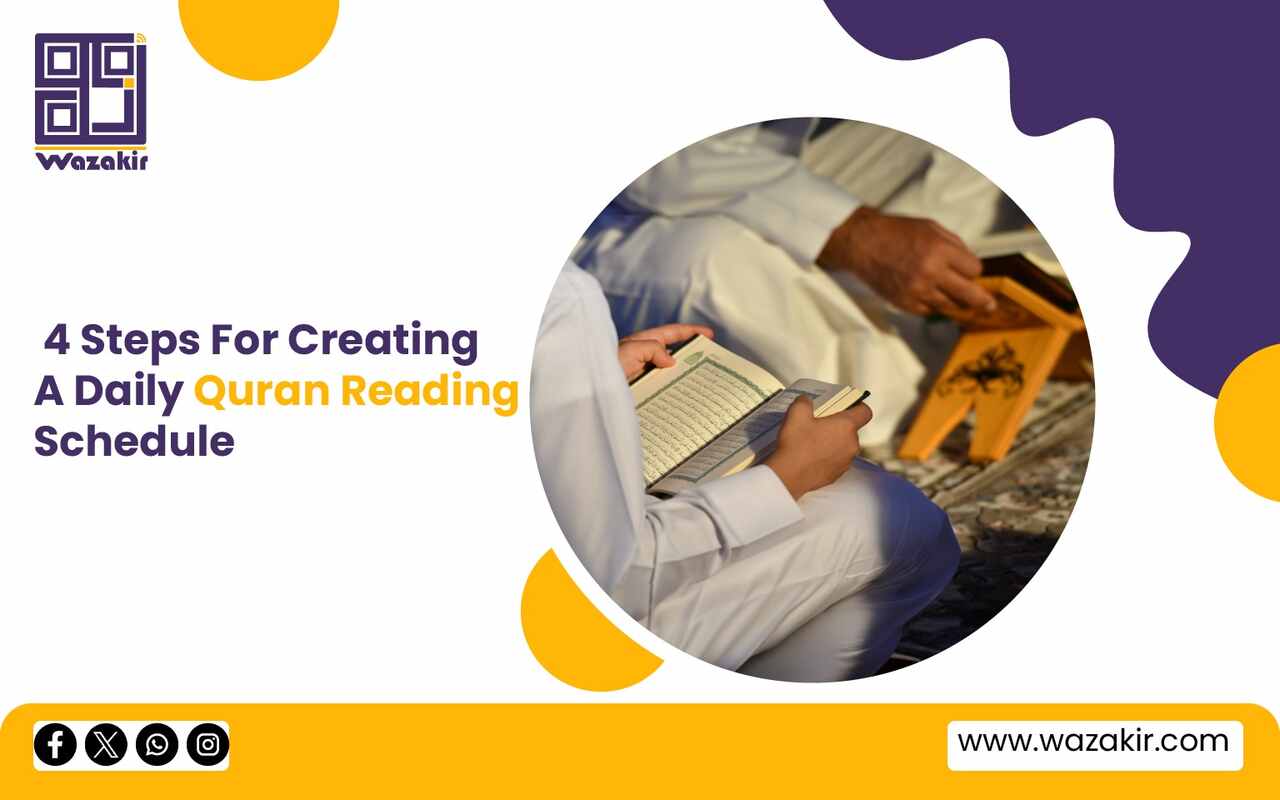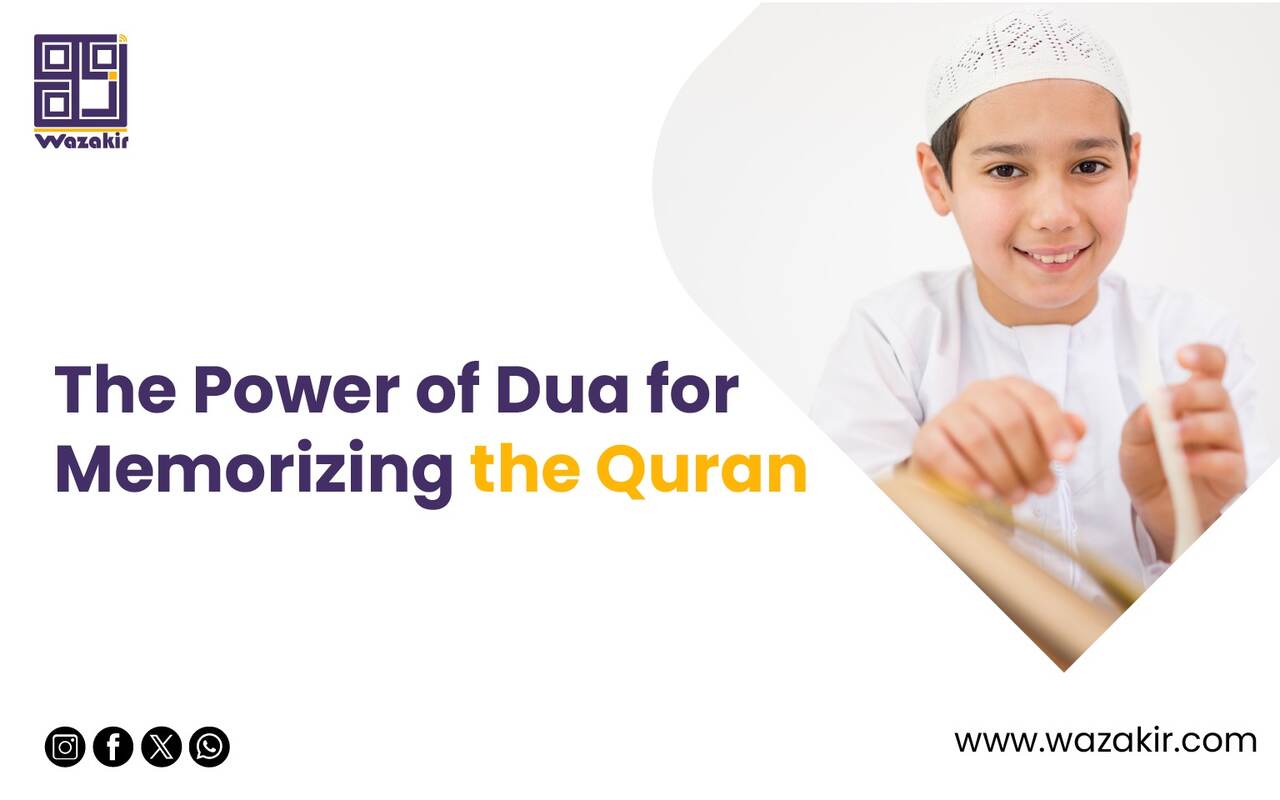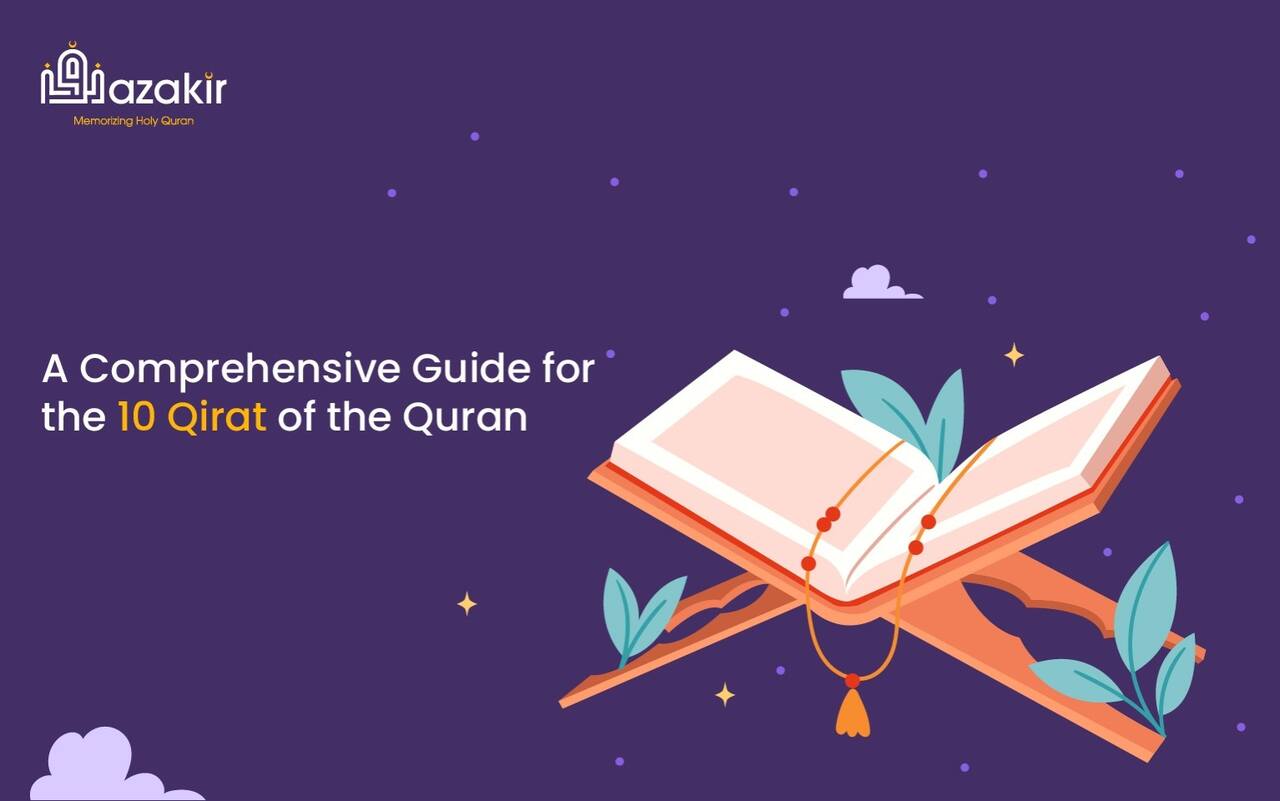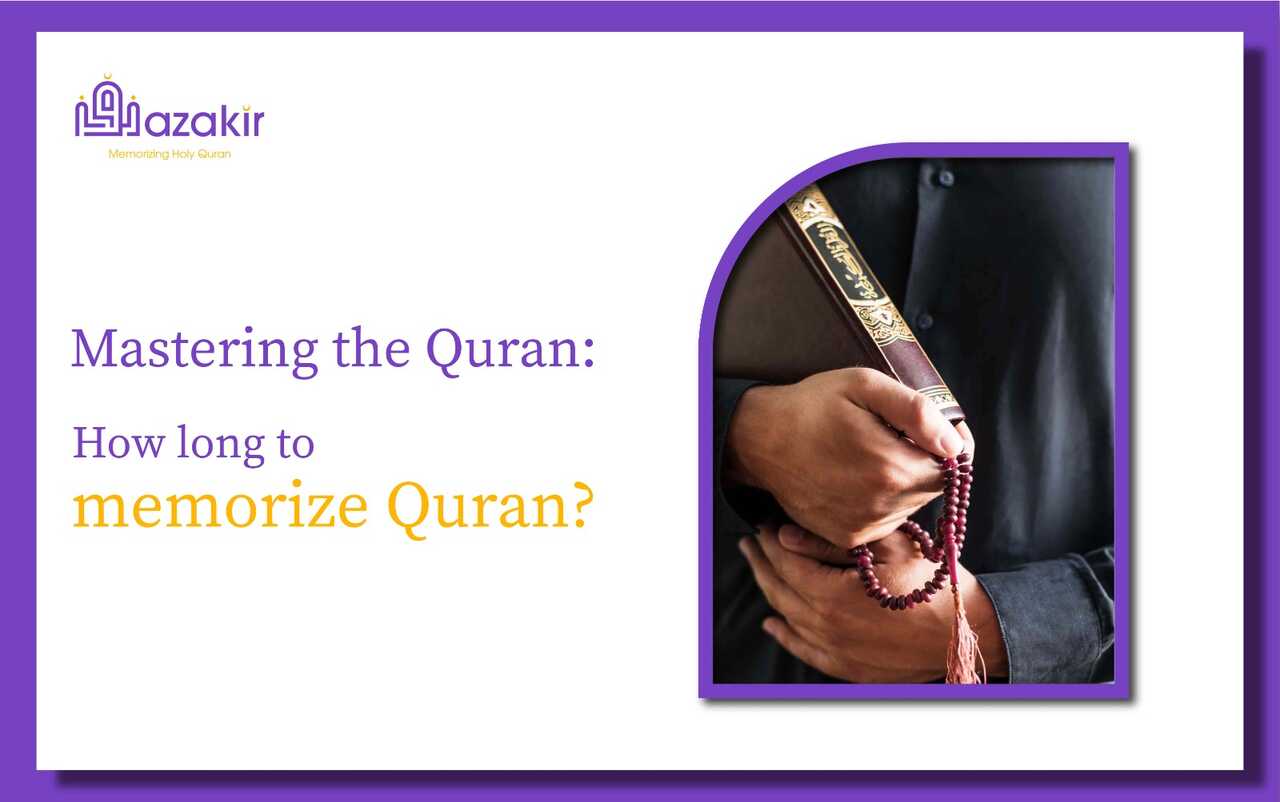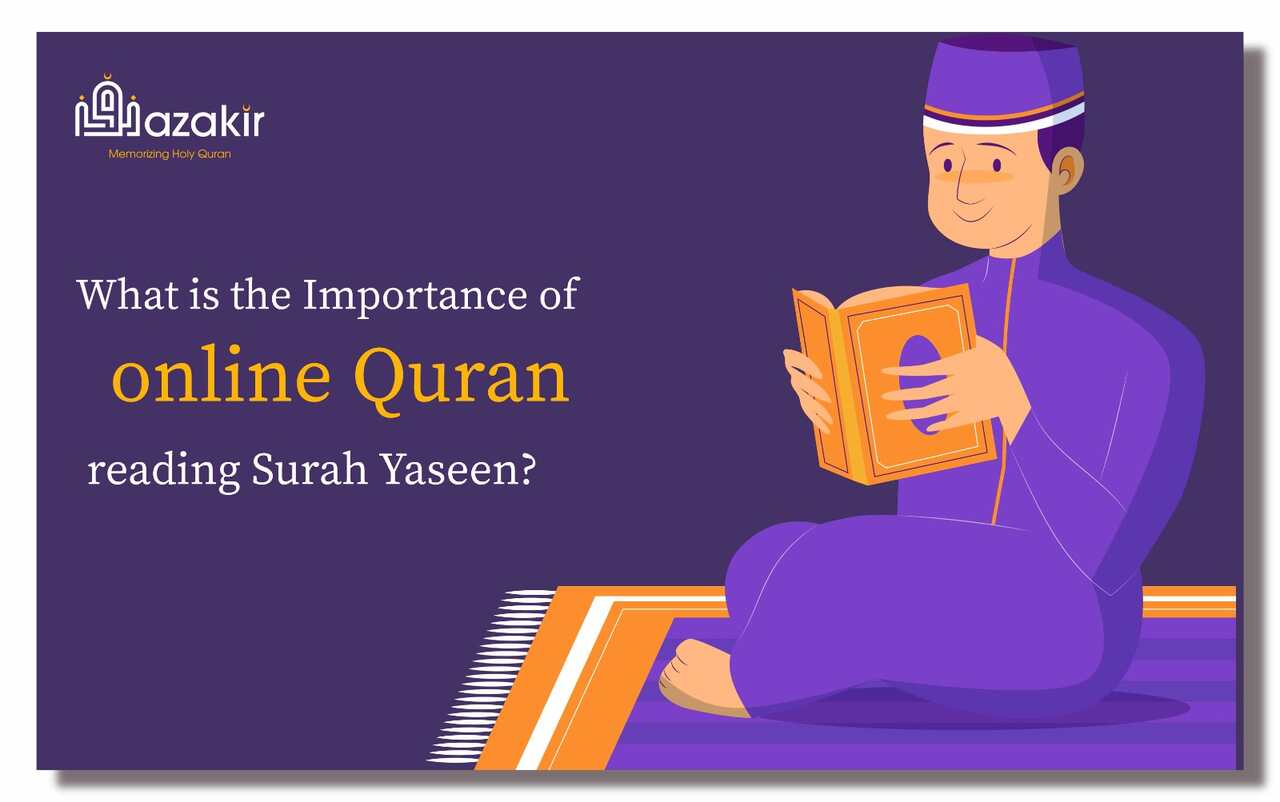The 10 Qirat of Quran(Ten Readings of the Holy Quran) hold a significant place in the world of Quranic recitation, offering diverse ways to beautifully render the sacred text. These distinct styles, known as Qirat, represent various methods of reciting the Quran and are revered for their historical and linguistic importance.
Exploring the different Qirat provides a deeper understanding of the nuances in Quranic readings and allows for a richer appreciation of the text’s lyrical and rhythmic qualities. Each of the ten Qirat offers a unique perspective on the pronunciation, intonation, and overall delivery of the verses, showcasing the intricate artistry behind Quranic modes of recitation.
By delving into the intricacies of these 10 qirat of Quran(Ten Readings of the Holy Quran), one can uncover a wealth of knowledge about the diverse traditions and interpretations that have shaped Quranic recitation throughout history. The significance of these Qirat extends beyond mere vocalization; they serve as a testament to the enduring beauty and complexity inherent in the recitation of the Quran.
The History and Development of the The 10 Qirat of Quran
The evolution of the 10 Qirat of Quran(Ten Readings of the Holy Quran) throughout Islamic scholarship is a fascinating journey that showcases the meticulous dedication to preserving and perfecting the recitation of the Quran. From the early days of Islam to modern times, scholars have delved deep into understanding and applying Tajweed rules to ensure accurate and beautiful recitation.
The history of the 10 Qirat of Quran is a testament to the profound reverence for the Quran within Islamic scholarship. Each Qira’ah represents a unique style of recitation, shaped by centuries of scholarly analysis and interpretation. Through rigorous study and practice, scholars have meticulously developed these distinct recitation methods, enriching our understanding of the Quran’s linguistic nuances.
Exploring the development of the 10 Qirat offers invaluable insights into how Islamic scholarship has nurtured and preserved this sacred tradition over generations. It highlights not only the diversity and richness of Quranic recitation but also underscores the enduring commitment of scholars to upholding Tajweed rules with utmost precision and reverence.
An In-depth Look at Each of the 10 Qirat and Their Characteristics
Exploring the intricate world of Quranic recitation, each of the 10 Qirat of Quran(Ten Readings of the Holy Quran) unveils a unique tapestry of tajweed variations and distinctive characteristics. These Qirat styles showcase the diverse beauty of Quranic recitation and highlight the precision and artistry involved in mastering each one.
Delving into the nuances of each Qirah, we uncover a rich tapestry of melodic variations, pronunciation intricacies, and rhythmic patterns that define these sacred recitation styles. From the measured cadence of Hafs to the melodious flow of Warsh, each qiraah offers a glimpse into the profound depth and complexity of Quranic recitation.
By examining the unique characteristics and tajweed variations inherent in each qiraah, we gain a deeper appreciation for the artistry and devotion that underpin this timeless tradition. Join us on a journey through the 10 Qirat as we unravel their secrets and explore the beauty of Quranic recitation in all its splendor.
The Importance of Studying and Preserving the Various Qirat Traditions
Studying and preserving the various Qirat traditions of the Quran is crucial for maintaining the integrity and authenticity of this sacred text. With 10 recognized Qirat of the Quran, each with its unique style and rules, it becomes essential to delve into these recitations to understand the nuances and beauty of the Quran’s language.
By studying different recitations, scholars, and students can gain a deeper insight into the linguistic richness and historical context of the Quran. This enhances their understanding and helps preserve the diverse interpretations and meanings embedded in each Qirat tradition.
The importance of learning Qirat goes beyond mere recitation; it fosters a profound connection with the divine message, instills reverence for the Quran, and ensures its accurate transmission through generations. Embracing these traditions is a testament to our commitment to upholding the purity and sanctity of this timeless scripture.
Tips for Reciters on How to Master the Art of Reciting in Different Qirat Styles
Mastering the art of reciting the Quran in different Qirat styles requires dedication, practice, and a deep understanding of Tajweed rules. By focusing on improving your Tajweed skills and following these Quran recitation tips, you can enhance your ability to recite in various Qirat styles with confidence.
To excel in recitation, start by familiarizing yourself with the 10 Qirat of Quran and understanding the unique characteristics of each style. Practice regularly to internalize the rhythm, melody, and pronunciation specific to each Qirat.
Additionally, focus on perfecting your Tajweed skills by seeking guidance from knowledgeable teachers or utilizing online resources. Pay attention to articulating letters correctly, observing proper elongation and pauses, and maintaining a melodious tone throughout your recitation.
By incorporating these tips into your practice routine and approaching each style with respect and reverence for the Holy Quran, you can gradually master the art of reciting in different Qirat styles while deepening your connection with the divine scripture.
Conclusion:
Embracing the diversity and beauty of Quranic recitation through the 10 Qirat tradition offers a profound way to appreciate the richness of the Holy Quran. The varied styles and recitations within the 10 Qirat of Quran showcase the linguistic beauty and versatility of this sacred text.
By exploring and understanding the nuances of each Qirat, we can deepen our connection to the Quran and gain a deeper appreciation for its divine message. The 10 Qirat tradition serves as a testament to the preservation of the Quran’s original text, ensuring its accurate transmission through generations.
In conclusion, embracing the diversity within the 10 Qirat tradition allows us to experience the Quran in all its glory, highlighting its timeless relevance and universal appeal. Let us continue to cherish and honor this unique aspect of our Islamic heritage for generations to come.
